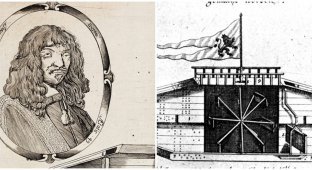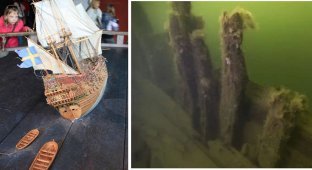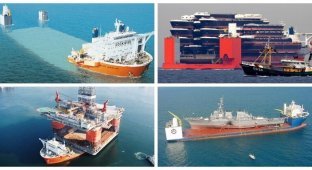In 1896, the French engineer Ernest Bazin alarmed the press with the announcement that he had invented a ship capable of moving across the sea at a speed of 60 km/h. 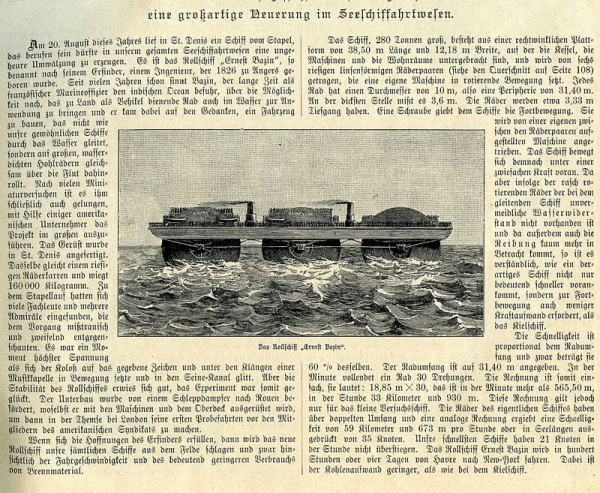
The vessel was a platform placed on 6 hollow lenticular wheels. The principle, which anticipated the appearance of hydrofoils much later, was that hollow float wheels lifted the main hull of the vessel from the surface of the water. Thus, the resistance of water during movement was reduced, which made it possible (in theory) to develop much higher speeds than conventional ships could afford. 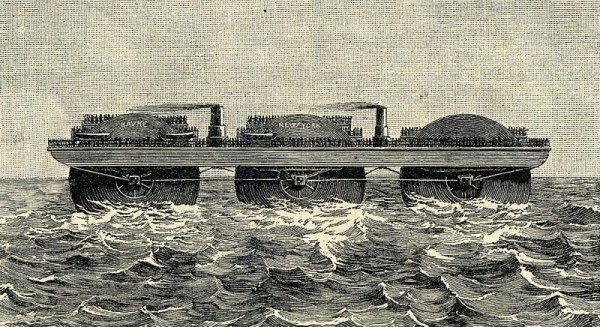
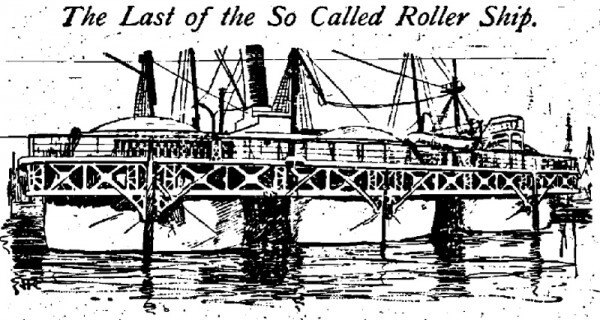
Huge wheels, in the form of a lens, had a minimal area of contact with the water surface, and when rotating, they were supposed to reduce the friction force with water even more. 
A project similar to this was proposed in 1880 by Robert Fryer. His rather crude model of a ship called the Alice, with triangular floats, was a complete fiasco (possibly because it was not equipped with any engines other than oars). 12 years of testing and experiments, ? 14,000 - down the drain.
The model was shown to the public (however, the model was not able to reach the stated speed... but it is certainly a big boat!)
The first (and only) ship, the 280-ton Ernest-Basin, was launched at Saint-Denis on 19 August 1896 after five years of model and testing at a cost of £20,000. 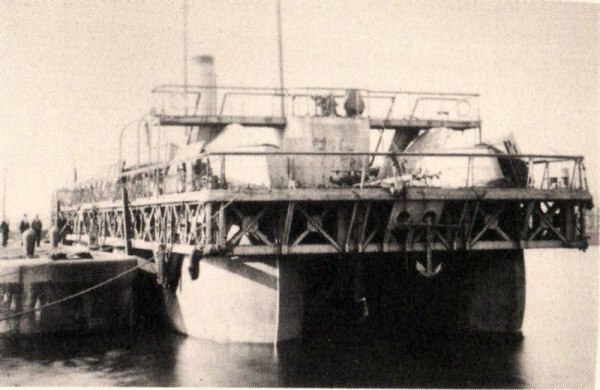
The ship had 3 pairs of disc-shaped wheels (minimalism triumphed) 10 meters in diameter. The thickness of the wheel in the center is 3m. 60cm. towards the edges of the disk the wheel disappeared. The platform, 40x12 meters, rose 4 meters above the water level (the wheels were submerged by 1/3 of the diameter. The wheels were rotated by 50-horsepower engines standing on the platform.
Still 550 hp. rotated the propeller, and another 200 hp. turned the wheels. 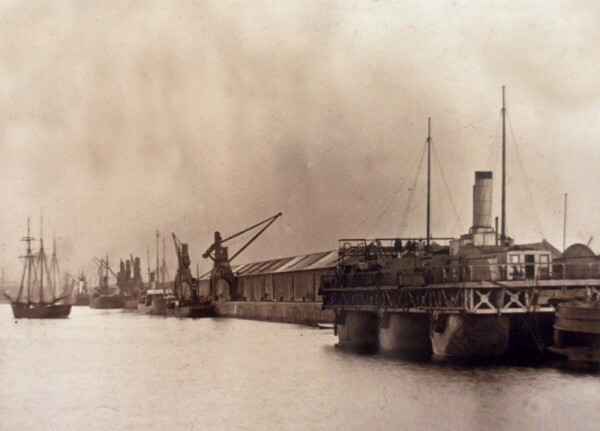
The engineer stated that the ship would have to travel at a speed of 18 knots. And with the installations running at full capacity - 20 knots. Enthusiastic admirers of his technical talent came up with their own assumptions (based on the design of the ship, engine power and unbridled imagination) - 32 (!) knots. 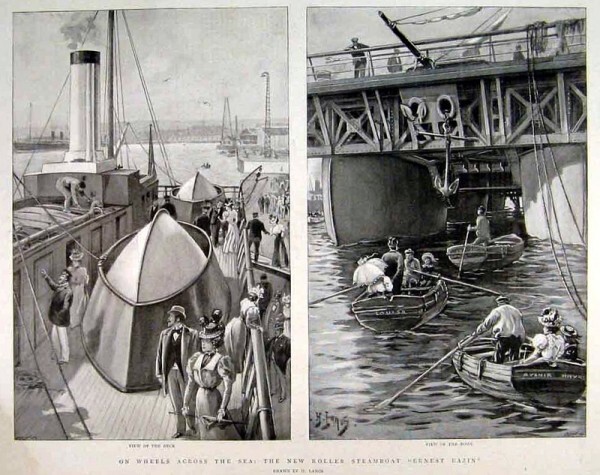
That would be absolutely wonderful. Because the fastest liners of that time reached a speed of about 20 knots, and military cruisers - 30 knots. Moreover! The ship turned out to be very economical. 800 tons of coal to cross the Atlantic (a regular liner would need 3-4 thousand tons for this. 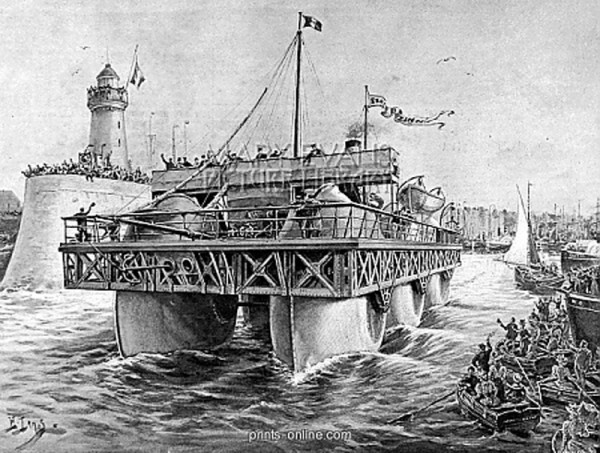
However, in preparation for departure, it turned out that the friction force of the water when the wheel rotated was much greater than calculated. The wheels could not rotate quickly and fuel consumption many times exceeded all reasonable standards. 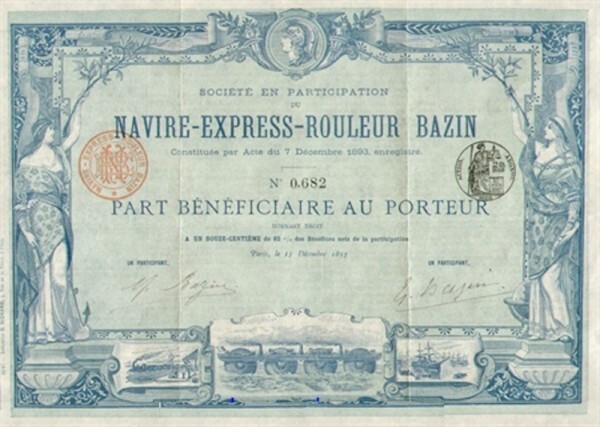
Bazin, died on January 21, 1898, a few weeks after he announced that he had overcome these problems and prepared plans for the construction of an ocean liner with four pairs of disks that could cross the Atlantic from Le Havre to New York in sixty hours. 
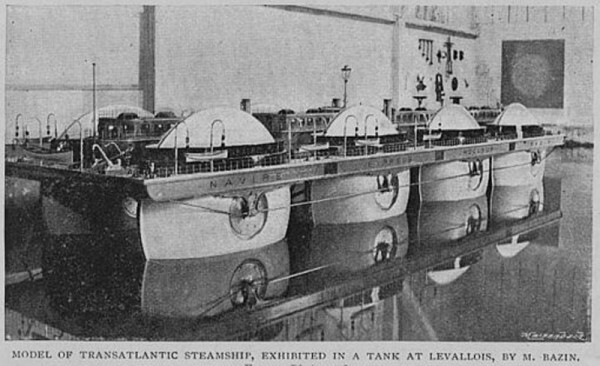
Here is his drawing from the patent office. As we can see, it was decided to add a couple more wheels.
The wheels are spinning, the propeller is pushing the device at an unprecedented speed... well, I really wish it would push. 
In the farewell speech at Bazin’s funeral the words were said: «M. Bazin, the Frenchman who devised the roller ship which was to cross the Atlantic in four days, himself rolled into the unknown world before his ship was a success.»
(“Mr. Bazin, the Frenchman who invented a ship on wheels to cross the Atlantic in 4 days, himself went to an unknown world without seeing the success of his brainchild”)
In 1889, the ship was sold at auction for scrapping. 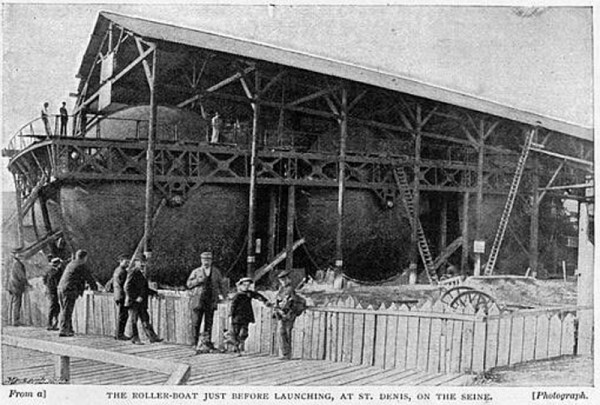
Later, engineers repeatedly returned to Bazin’s idea - a “ship on wheels.” 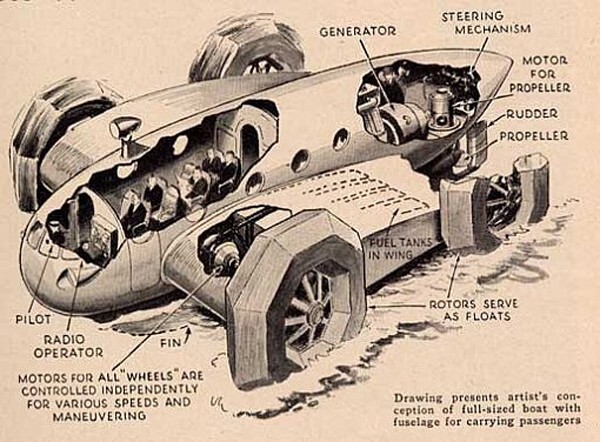
But nothing like that was ever built. 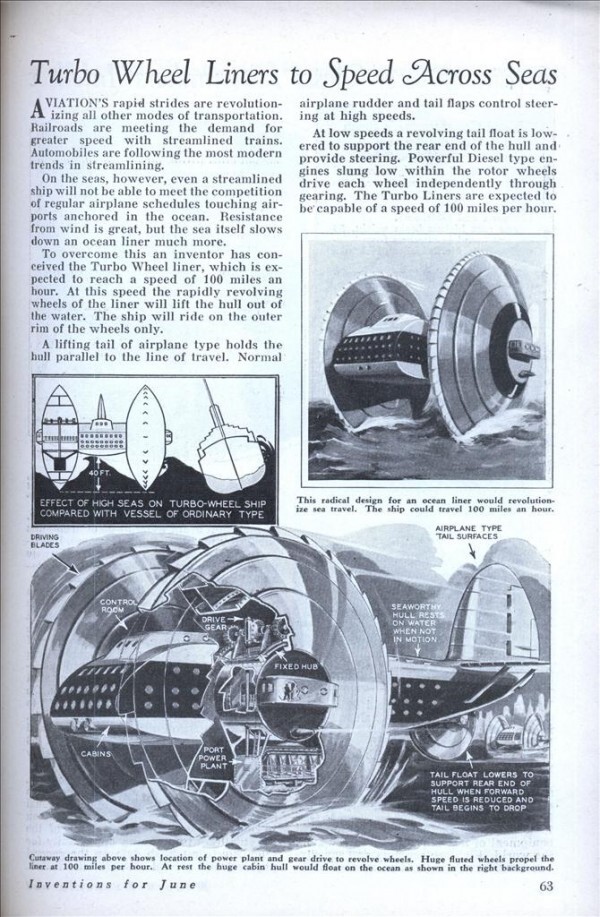
You probably know that these days there are swamp vehicles with large, low-pressure tires. They cross water obstacles by swimming, using wheels both as floats and as propulsion. If you've seen them, you've probably noticed the similarity between Bazin's wheel-steam drive and these cars.
These swamp walkers are not the best swimmers. Their speed is ridiculous. The same thing happened with Bazin’s brainchild: the wheels produced more splash than traction, and barely moved the ship forward.
Add your comment
You might be interested in:












